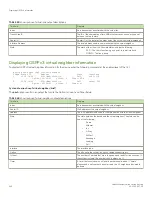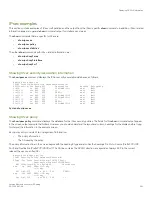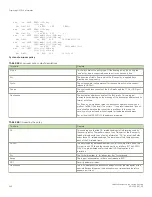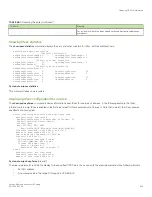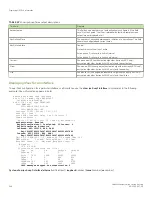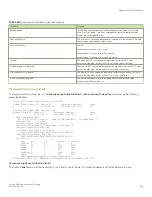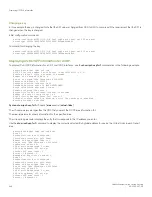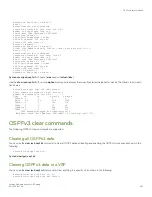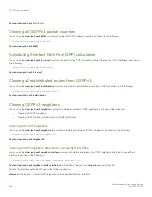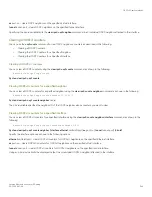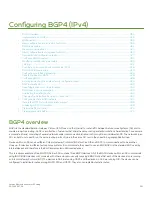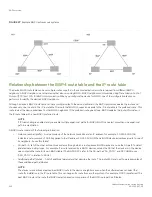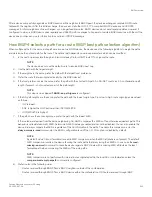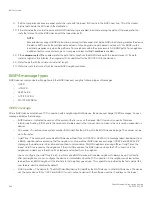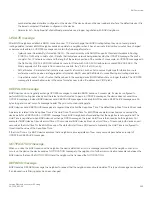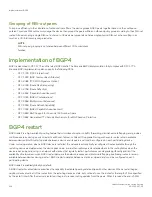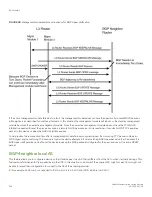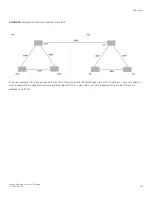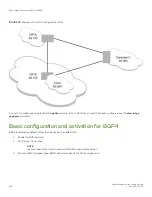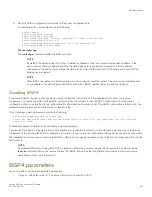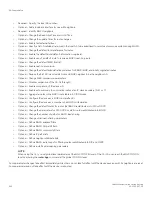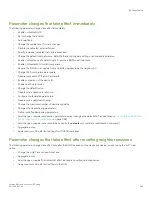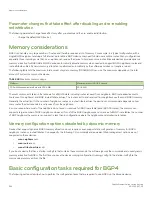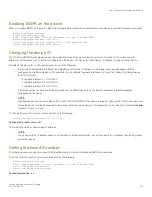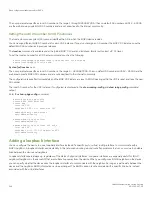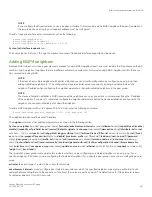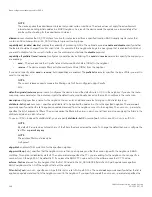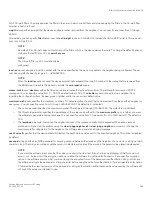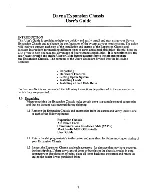
9. If all the comparisons above are equal, prefer the route with the lowest IGP metric to the BGP4 next hop. This is the closest
internal path inside the AS to reach the destination.
10. If the internal paths also are the same and BGP4 load sharing is enabled, load share among the paths. Otherwise prefer the
route that comes from the BGP4 device with the lowest device ID.
NOTE
Brocade devices support BGP4 load sharing among multiple equal-cost paths. BGP4 load sharing enables the device
to balance traffic across the multiple paths instead of choosing just one path based on device ID. For EBGP routes,
load sharing applies only when the paths are from neighbors within the same remote AS. EBGP paths from neighbors
in different autonomous systems are not compared, unless multipath
multi-as
is enabled.
11. If the
compare-router ID
is enabled, prefer the path that comes from the BGP4 device with the lowest device ID. If a path
contains originator ID attributes, then originator ID is substituted for the ROUTER ID in the decision.
12. Prefer the path with the minimum cluster list length.
13. Prefer the route that comes from the lowest BGP4 neighbor address.
BGP4 message types
BGP4 devices communicate with neighbors (other BGP4 devices) using the following types of messages:
•
OPEN
•
UPDATE
•
KEEPALIVE
•
NOTIFICATION
•
ROUTE REFRESH
OPEN message
After a BGP4 device establishes a TCP connection with a neighboring BGP4 device, the devices exchange OPEN messages. An open
message indicates the following:
•
BGP4 version - Indicates the version of the protocol that is in use on the device. BGP4 version 4 supports Classless
Interdomain Routing (CIDR) and is the version most widely used in the Internet. Version 4 also is the only version supported on
devices.
•
AS number - An autonomous system number (ASN) identifies the AS to which the BGP4 device belongs. The number can be
up to four bytes.
•
Hold Time - The number of seconds a BGP4 device will wait for an UPDATE or KEEPALIVE message (described below) from
a BGP4 neighbor before assuming that the neighbor is not operational. BGP4 devices exchange UPDATE and KEEPALIVE
messages to update route information and maintain communication. If BGP4 neighbors are using different Hold Times, the
lowest Hold Time is used by the neighbors. If the Hold Time expires, the BGP4 device closes the TCP connection to the
neighbor and clears any information it has learned and cached from the neighbor.
You can configure the Hold Time to be 0, in which case a BGP4 device will consider neighbors to always be up. For directly-
attached neighbors, you can configure the device to immediately close the TCP connection to the neighbor and clear entries
learned from an EBGP neighbor if the interface to that neighbor goes down. This capability is provided by the fast external fail
over feature, which is disabled by default.
•
BGP4 Identifier - The device ID. The BGP4 Identifier (device ID) identifies the BGP4 device to other BGP4 devices. The device
use the same device ID for OSPF and BGP4. If you do not set a device ID, the software uses the IP address on the lowest
BGP4 overview
FastIron Ethernet Switch Layer 3 Routing
354
53-1003627-04
Summary of Contents for FastIron SX 1600
Page 2: ...FastIron Ethernet Switch Layer 3 Routing 2 53 1003627 04 ...
Page 16: ...FastIron Ethernet Switch Layer 3 Routing 16 53 1003627 04 ...
Page 20: ...FastIron Ethernet Switch Layer 3 Routing 20 53 1003627 04 ...
Page 142: ...FastIron Ethernet Switch Layer 3 Routing 142 53 1003627 04 ...
Page 150: ...FastIron Ethernet Switch Layer 3 Routing 150 53 1003627 04 ...
Page 200: ...FastIron Ethernet Switch Layer 3 Routing 200 53 1003627 04 ...
Page 214: ...FastIron Ethernet Switch Layer 3 Routing 214 53 1003627 04 ...
Page 350: ...FastIron Ethernet Switch Layer 3 Routing 350 53 1003627 04 ...
Page 476: ...FastIron Ethernet Switch Layer 3 Routing 476 53 1003627 04 ...
Page 588: ...FastIron Ethernet Switch Layer 3 Routing 588 53 1003627 04 ...

